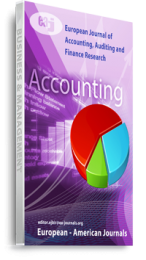Business whether large, small, formal or informal contributes largely to the country’s economy through increasing trading, provision of employment and livelihood opportunities. Kenya through major support of entrepreneurship has tried to ensure that the businesses become the source of development. Thus, there is need that these businesses are going concerns so as to fulfil this dream. However, many businesses in Kenya are being faced with the challenge of identifying and valuing their assets. The study thus endeavored to determine asset management practice in the business as a solution. Guided by competitive advantage theory by Michael Porter, the researcher purposely dwelt in the concept of asset management in Kenya’s business. Library design led to collection of secondary data in August 2015 that was qualitatively analyzed. From the findings, the study integrated the management techniques for both tangible and intangible assets. However, the study recommends more scholarly works to be done on ways to automate the asset management practices in the business and also on intangible assets. This is because these assets are as a result of rapid technological changes.
Keywords: Asset Management System, Intangible Assets, Tangible Assets

